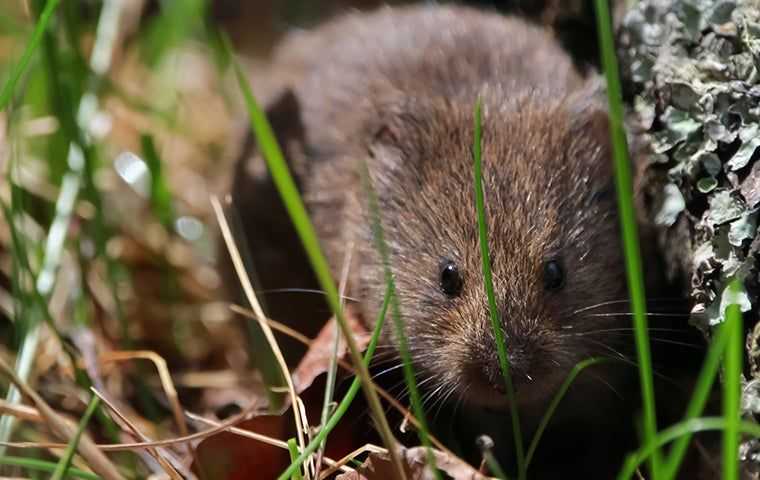Proven Vole Control Approaches to Safeguard Your Property
Proven Vole Control Approaches to Safeguard Your Property
Blog Article
Comprehensive Overview to Reliable Vole Parasite Control: Invasion Recognition and Treatment Methods
In the world of reliable insect control, vole infestations posture a special challenge that requires a strategic technique. These tiny rodents, typically mistaken for mice, can damage yards, grass, and plants if left untreated. Recognizing the indications of vole existence and applying targeted treatment techniques are essential elements of a successful insect management strategy. By discovering the subtleties of vole actions, recognizing crucial indicators of invasion, and assessing a series of control choices, one can create a comprehensive method to combat these elusive insects.
Understanding Vole Actions
Vole behavior is characterized by their burrowing habits and rapid recreation prices, making them a challenging insect to control successfully. Their fast reproductive rate more complicates control initiatives, with women capable of creating numerous clutters in a single year, each including several spawn.
Voles are most energetic throughout the early morning and night hours, investing most of their time foraging for food. Their delving habits not only disturb gardens and grass however additionally make them challenging to detect and get rid of. Understanding vole habits is important for reliable insect control approaches. By identifying their burrow places, keeping track of feeding locations, and implementing targeted control techniques, such as capturing or habitat adjustment, vole problems can be managed effectively.
Indicators of Vole Infestation

Prevention Methods
Implementing efficient avoidance approaches is essential in lessening vole problems and guarding vegetation from their damaging feeding practices (vole control utah). To prevent vole infestations, it is important to begin by removing possible food resources and sanctuary. Maintain yard and plant life cut short, remove weeds and debris, and maintain a tidy garden or lawn to make the area less appealing to voles. Setting up obstacles such as equipment fabric or below ground fence can additionally assist prevent voles from going into details locations. Additionally, reducing excess moisture by repairing leaky pipelines and making certain appropriate drain can make the atmosphere less hospitable for voles.
Regularly examining the home for indicators of vole task, such as paths and burrow openings, is important for very early discovery and punctual action. If vole activity is suspected, take into consideration utilizing catches or repellents strategically positioned near their pathways.
Non-Lethal Control Techniques
To successfully manage vole populaces while prioritizing gentle methods, non-lethal control strategies provide sensible remedies for decreasing vole damage in gardens and landscapes. One effective method is the use of physical barriers such as hardware cloth or wire mesh to safeguard susceptible plants. These barriers can be buried at least 12 inches curved and deep at a 90-degree angle to protect against voles from delving below. In addition, environment adjustment can prevent voles by decreasing their liked food sources and hiding spots. Keeping a well-mowed grass, getting rid of particles, and maintaining plants trimmed can make the atmosphere less attractive to voles.

Lethal Control Options
One reliable method for resolving vole infestations in yards and landscapes involves the critical use of deadly control choices. When confronted with a severe vole invasion that non-lethal approaches have actually failed to consist of, executing deadly control actions becomes vital. One typically employed deadly control choice is using breeze traps. These traps are developed to swiftly and humanely eliminate voles upon activation, making them a preferred choice for many garden enthusiasts and landscapers. To raise the efficiency of snap traps, it is advised to position them in locations where vole activity is high, such as along paths or near burrow entries. One more dangerous control alternative is the utilization of toxic baits particularly developed to target voles. These baits consist of toxin that is consumed by the voles, bring about their ultimate vole yard damage death. Care should be exercised when using harmful baits to prevent harm to non-target pets or pet dogs. Overall, when employing dangerous control alternatives, it is vital to do so sensibly and according to regional policies to successfully handle vole invasions.
Conclusion
In final thought, effective vole bug control requires an extensive understanding of vole habits, identification of signs of invasion, application of prevention approaches, and application of both deadly and non-lethal control approaches. By combining these strategies, individuals can efficiently take care of vole populaces and protect their property from damage. It is necessary to deal with vole infestations without delay to stop more problems and decrease the effect on the surrounding environment.
Provided the complex passage systems and fast reproduction prices characteristic of voles, identifying the indications of vole infestation comes to be necessary in effective pest control. One of the primary indications of vole presence is the presence of surface paths or trails in yard or snow, usually regarding 1-2 inches wide, developed as voles take a trip between their burrows and food sources.To properly handle vole populaces while prioritizing humane methods, non-lethal control approaches provide practical remedies for lowering vole damage in yards and landscapes.One efficient method for attending to vole problems in landscapes and gardens includes the calculated use of deadly control alternatives. vole yard damage.In conclusion, efficient vole pest control needs a thorough understanding of vole actions, identification of signs of invasion, execution of avoidance methods, and use of both non-lethal and dangerous control methods
Report this page